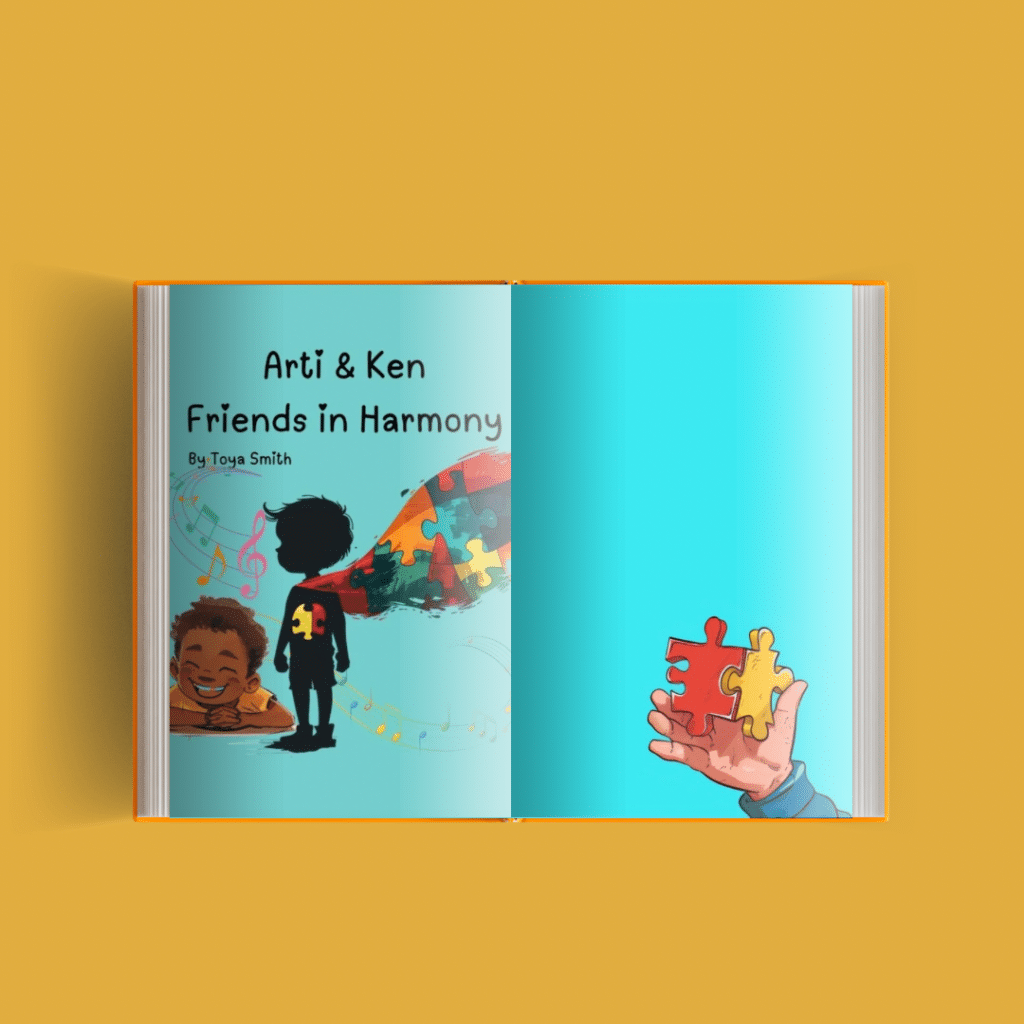By: Briana Edmonds (Edmonds Media Empire)
In the vast expanse of children’s literature, where tales of magic, adventure, and friendship abound, emerges a story that not only captivates the imagination but also opens hearts to the beauty of diversity and acceptance. “Arti and Ken: Friends In Harmony,” crafted by the visionary Toya Smith, is a groundbreaking narrative that paints a world seen through different lenses—literally. This heartwarming tale takes us into the lives of two remarkable children, Arti and Ken, whose unique ways of perceiving the world bring them together in an unforgettable bond of friendship.
Arti, a vibrant 10-year-old with an extraordinary view of life, experiences his surroundings in a symphony of colors. Where others see numbers and letters, Arti sees shades and hues that dance before his eyes in a dazzling display. However, this beautiful way of seeing also comes with its challenges; social cues and norms remain elusive mysteries to him. Enter Ken, a boy whose perception is equally unique but in a different dimension. Ken sees the world in captivating patterns that weave through everything around him. Together, they discover a shared language beyond words—the language of seeing the world through an exceptional lens.
“Toya Smith’s ‘Arti and Ken: Friends In Harmony’ is not just a story about friendship; it’s an invitation to acknowledge and celebrate neurodiversity,” says Smith. Through her narrative, Smith aims to highlight how differences can become our strengths when we learn to embrace them with empathy and understanding. It’s about finding harmony in diversity and creating melodies from what might seem like dissonant notes.
The book beautifully illustrates how Arti and Ken navigate their differences and find common ground in their distinctive perspectives. Their journey is one filled with challenges as they strive to understand each other’s worlds better. Yet, it’s their unwavering commitment to their friendship that teaches them—and us—the invaluable lesson that unity can be found amidst diversity.
Smith’s storytelling transcends mere entertainment; it serves as an essential tool for parents and educators alike to introduce children to concepts such as empathy, acceptance, and inclusivity from an early age. By exploring Arti’s colorful world side by side with Ken’s patterned universe, young readers are gently guided towards recognizing that everyone views life differently—and that these differences should be celebrated rather than feared or shunned.
“Arti and Ken: Friends In Harmony” stands as a testament to Toya Smith’s innovative approach to children’s literature—one where imagination meets purposefulness. Her ability to weave complex themes into engaging stories for young minds is exemplary—a talent she shares across platforms as evident from her active engagement on social media (@authortoyasmith) where she connects with readers globally.

Photo Courtesy: Toya Smith
The book’s impact extends beyond its pages; it encourages conversations about neurodiversity in homes and classrooms around the world. It prompts discussions on how friendships can blossom between individuals regardless of their neurological make-up or sensory perceptions. This story underscores the message that understanding each other’s experiences leads to richer interactions filled with more profound compassion—a message increasingly relevant in today’s diverse society.
In addition to being available on Amazon, “Arti and Ken: Friends In Harmony” has started making its rounds across various educational institutions as recommended reading for fostering inclusivity among students.
As we delve into Toya Smith’s enchanting tale, let us remember its core message—that harmony exists not despite but because of our differences. Each perspective offers something valuable; each unique way of seeing enriches our collective understanding of the world.
Through “Arti & Ken,” we are reminded that friendships have the power to bridge divides if only we’re willing to listen closely enough—to see beyond our own patterns into someone else’s colors. In doing so, we create not just harmonies but symphonies—richer and more beautiful because they include every note.
Published by: Khy Talara

